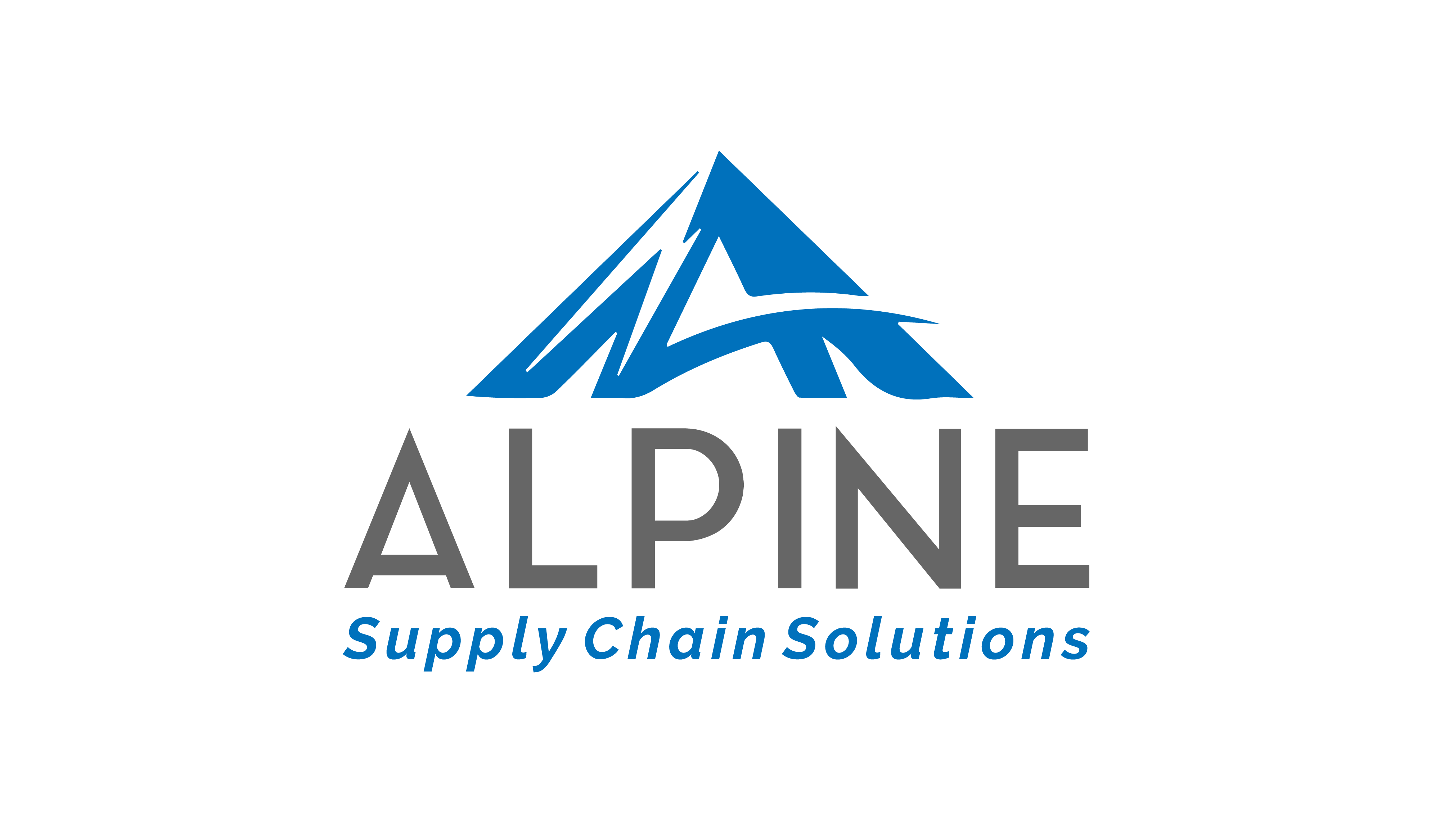
by Noelle Abarelli | Sep 8, 2023 | Alpine News Blog
As dedicated supply chain professionals, we spend most of our year navigating deadlines, troubleshooting challenges, and enhancing our processes. It’s demanding yet fulfilling work. While ensuring our clients receive timely assistance remains our top priority, we also take pride in our active role within our community. That’s why we are thrilled to mark our 6th consecutive year of participation in Gigi’s Playhouse’s annual golf fundraiser!
About Gigi’s Playhouse
Gigi’s Playhouse is on a mission to empower individuals with Down Syndrome and their families right from the initial diagnosis. They make a lifetime commitment to support them through therapeutic-based programs, educational opportunities, career development, and more. It’s worth noting that Gigi’s Playhouse operates solely on donations, and all their programs are provided free of charge.
Why Gigi’s Playhouse?
Down Syndrome is the most common chromosomal disability in the US, yet it remains one of the most underfunded. This is a cause that deeply resonates with us, and we have committed ourselves not only to assist but also to raise awareness. Each year, we actively seek ways to volunteer and support Gigi’s Playhouse, and one of our most cherished traditions is participating in their annual golf fundraiser.
Annual Golf Fundraiser
Gigi’s 10th annual golf outing was held on August 28, 2023 at The Club of Wynstone in North Barrington, IL. All 144 slots were filled and the event raised over $160,000 in support of Gigi’s Playhouse Down Syndrome Achievement Centers. Alpine is grateful to our customers and partners who joined us in making it a memorable day:
- CJ Logistics
- Conveyor Solutions
- Crate & Barrel
- Dexter
- Essendant
- Mattel
- Walgreens
As always, the event was not only enjoyable but also incredibly fulfilling. Spending a day on the green with wonderful people is a gift in itself. Yet, the knowledge that we are raising funds to assist those in need adds a priceless dimension to it all. If you’d like to learn more or make a donation to this worthy cause, please visit Gigi’s Playhouse.

by Noelle Abarelli | Aug 8, 2023 | Alpine News Blog
Alpine Supply Chain Solutions, a boutique consulting firm focused on maximizing supply chain investments, has been named a 2023 Great Supply Chain Partner by SupplyChainBrain. SupplyChainBrain has maintained a tradition of celebrating 100 Great Supply Chain Partners for twenty-one consecutive years, and 2023 invited a variety of competitive nominations.
The process is selective, and the list results from a six-month online poll of supply chain professionals where a set of 10 criteria must be met. For twenty-one years, SupplyChainBrain has reviewed nominations from thousands of vendors pitting them against the highest of standards in:
- Reliability
- Service Excellence
- Value
- Knowledge of the customer’s business
- Problem-solving skills
- An attitude of continuous improvement
- Solid after-sales support
- A positive “can-do” attitude
- Global reach
- Strong leadership.
Buyers and partners are invited to nominate vendors and service providers whose solutions have helped them improve their efficiency, customer service, and overall supply chain performance, and only 100 make the cut.
As Brad Berger, SupplyChainBrain Publisher shares, “Our six-month online poll of supply chain professionals requires a qualified response, asking them to nominate vendors and service providers whose solutions have made a significant impact on their company’s efficiency, customer service, and overall supply chain performance. This year’s field of nominees was highly competitive and overall excellent – coming from all sectors of supply chain management. All companies should be proud to be named amongst the 100 Great!”
According to Michael Wohlwend, Managing Principal at Alpine, “Receiving this distinction two years in a row is inspiring. But more than anything, it’s representative of our tenacity and resolve, especially when working with high-growth clients like Hy-Capacity. We are so grateful and thrilled to receive this recognition based on nominations from our customers.”
To view the complete list of this year’s recipients, please visit the SupplyChainBrain website.
About Alpine Supply Chain Solutions
Alpine Supply Chain Solutions, based in Naples, FL, is a supply chain consulting company driven to ensure their clients get the most value from their investments. Their approach to every project starts with the data and ends with a cost justifiable solution. With deep roots in industrial engineering, Alpine’s approach is unique. For more information, please visit: http://www.AlpineSupplyChain.com
About Supply & Demand Chain Executive
Supply & Demand Chain Executive is the only supply chain publication covering the entire global supply chain, focusing on trucking, warehousing, packaging, procurement, risk management, professional development and more. Supply & Demand Chain Executive and sister publication Food Logistics also operate SCN Summit and Women in Supply Chain Forum. Go to www.SDCExec.com <http://www.sdcexec.com/> to learn more.

by Noelle Abarelli | Jul 25, 2023 | Blog
In the fast-paced and challenging business world of today, supply chain executives face immense pressure to deliver continuous cost improvements year after year. However, achieving these demands requires a well-managed program of continuous improvement, especially amidst the frequent changes and uncertainties in the current supply chain. To thrive and gain a competitive edge, companies need to embrace a flexible yet focused approach in their strategic plans and investments. This blog post explores the concept of “Roughly West” and introduces the Continuous Improvement Management Model to ensure ongoing success in continuous improvement programs.
– Contributed by Tom Ryan, Senior Director, Alpine Supply Chain Solutions
Understanding “Roughly West”
“Roughly West” is a term used to describe a corporate strategic direction that allows for flexibility and adaptation. It represents a general destination or goal, which may evolve and change over time. The key to “Roughly West” is its ability to guide projects that support the organization in reaching its objectives, even when those goals may be loosely defined and subject to refinement. By adopting a strategic direction that is both flexible and focused, enterprises can gain an edge over hesitant competitors.
The Continuous Improvement Management Model
The Continuous Improvement Management Model is a repeatable cycle designed to execute the strategic direction of an organization in small, well-scoped chunks. Here are the steps to follow:
- Establish a “Roughly West” Plan: Begin by developing a general direction for the enterprise and outlining the role of each area in moving towards this goal. Identify projects that align with the plan and select one that can deliver incremental improvements within a well-defined timeframe.
- Measure Results: After executing the selected project, measure its results and communicate its success to the entire enterprise. Building confidence and commitment among stakeholders is crucial for the ongoing success of the program.
- Re-evaluate the Plan: Reassess the “Roughly West” plan periodically and make necessary adjustments based on changing conditions. Divide the plan into well-defined phases, each with its own timeframe, to maintain focus and flexibility.
- Embrace the Unpredictable: Acknowledge that the implications of any strategic plan over a two to three year period are difficult to predict. The focus on well-defined phases and plan re-evaluation allows for adaptive adjustments without the need for exhaustive contingency planning.
Getting Started with Continuous Improvement
To initiate a successful program of continuous improvement, start with a strategic plan that outlines the corporation’s general direction for the next two to three years. Focus on a “Roughly West” plan that covers broad yet meaningful strokes rather than getting bogged down in precise details. Then, assess the organization’s current state, identify areas with the potential for impactful improvements, and start with small, well-defined phases that can be executed within controlled timeframes.
The Value of Continuous Improvement Management Model
The Continuous Improvement Management Model offers significant business value compared to the traditional “Big Bang” implementation approach. By segmenting projects into well-defined deliverables with incremental value, capital expenditures are deferred over time, and anticipated benefits are received sooner. This leads to a significant increase in the total value delivered by the project, greater control over project costs, and the ability to adapt tactically to meet changing strategic requirements.
Conclusion
In today’s competitive and uncertain business landscape, supply chain executives must navigate towards a “Roughly West” strategic direction. By implementing the Continuous Improvement Management Model and breaking projects into well-defined phases, enterprises can deliver incremental value, adapt to changing conditions, and gain a competitive edge. Embracing continuous improvement and staying focused on delivering measurable business value will pave the way for success and resilience in the face of any challenges that lie ahead. For more tips on Managing a Continuous Improvement Program, download this white paper.

by Noelle Abarelli | Jul 5, 2023 | Guest Post, Supply Chain Technology
When it comes to deploying warehouse management systems (WMS) and labor management systems (LMS), the most common approach is to start with a WMS and then add an LMS when needed to create additional labor cost savings.
However, a growing number of organizations are finding it a best practice to implement a WMS and LMS at the same time—especially when opening new facilities without legacy operational systems in place. There are also some circumstances where it may make sense to start with an LMS.
Here’s a breakdown of the benefits of each approach:
Start with a WMS and then add an LMS
Most supply chain businesses start with a WMS. A WMS provides a broad solution to meet the wide range of needs within warehouse operations – inventory control, order fulfillment, etc. – making it the logical starting point for automating and optimizing processes.
As the operation scales and becomes more advanced, adding an LMS is a natural next step. The greater the size and complexity of the site or network of sites, the greater the need and the stronger the justification for both WMS and LMS.
These solutions work together to help address labor market challenges and other pressing issues facing warehouse operators. For instance, the WMS will improve inventory control, reduce shrinkage, and reduce order and shipment errors. Meanwhile, the LMS will improve employee interaction (coaching) and employee rewards (compensation) as well as drive increased labor productivity and retention.
Organizations that start with a WMS can improve overall operational processes—how you do the work within the facility, such as system-directed put away and replenishment tasks. Additionally, saving the LMS implementation for phase two helps the organization better absorb the operational changes and avoid overload—from the C-suite to the associates on the floor. Once the WMS is fully functioning, an LMS can then improve operational processes, generate labor cost savings and build a culture of measurability and accountability.
These days, integrating an LMS into an existing WMS is a standard process in which most combinations are either pre-existing or can be configured quickly. Most WMS and LMS are now deployed as “software as a service” (SaaS) solutions in the cloud, making deployment and integration even easier.
While many operations have gotten by with just a WMS in the past, new warehouse automation and robotics have increased the need for an LMS. Customers recognize that using advanced automation in part of the operation will reduce labor costs, but the total value is not captured unless an LMS is utilized for the remaining workforce – both for those interacting with the automation and those still in traditional roles.
In general, the higher the labor headcount—both total count and per-shift count—the greater the need will be for an LMS. And the higher the dollar value and order value of the inventory, the more sense it makes to add an LMS to the WMS.
Implement a WMS and LMS simultaneously
Implementing a WMS and LMS together is an increasingly popular choice, especially in cases where organizations are opening new facilities and creating processes from scratch. The biggest benefit of implementing the WMS and LMS together is that the operation will go through a single large transformation with one major change management program and IT effort to put a broad operational solution in place.
There’s also an opportunity to take a crawl, walk, run approach, in which the LMS portion of the project can be deployed in stages and fully ramped up over time while still generating instant operational benefits. That can mean launching the LMS at the same time as the WMS, but starting only with reasonable expectancy analysis where employees are compared to each other to see who’s picking the most and who’s picking the least. That data can then trigger coaching conversations.
Once employees get comfortable with the idea that their performance is being observed and they’re receiving feedback on it, the organization could deploy engineered labor standards via the LMS so employee performance is measured relative to what the work should take based on an engineering assessment.
The final step could be to deploy incentives, variable compensation for the associates that exceed the standards, and recognition programs. That’s an effective way to ramp up the use of the LMS over time while getting instant benefits starting with phase one.
Start with an LMS and add a WMS
There are only a few use cases that make sense for this approach, which is why it is not often used.
Organizations that start with an LMS typically are looking for speed to value – generating real savings in the form of reduced labor costs and then using those savings to help fund a new WMS program. Given that the ramp-up time for an LMS is typically much shorter than for a WMS, and that an LMS can begin paying ROI dividends in the form of reduced labor costs almost immediately, there are compelling arguments to be made for this approach.
But LMS-first would make the most sense for organizations that need to replace an outmoded existing WMS. The downside: the new LMS would first require integration to that legacy WMS and then another integration effort when the new WMS is implemented. But for organizations that have been limping along with a legacy WMS system for decades, it is a possible path forward.
LMS-first also can be a beneficial approach for organizations transforming the operational model for existing facilities. For example, if a traditional wholesale cases-and-pallets operation adopts a unit-picking model in a shift to e-commerce fulfillment, implementing an LMS first can drive the hard savings associated with labor, and that money can then be used to further fund the transformation.
LMS is an increasingly essential operational component
Whichever implementation order makes the most sense for a given organization, one thing holds true: An LMS is an essential component of the modern warehouse operation, maximizing the productivity of the associates who work there, increasing retention, and generating significant ongoing ROI.
This blog post was written in conjunction with TZA.

by Noelle Abarelli | Jun 26, 2023 | Alpine News Blog
We’re all keenly aware of the impact the COVID-19 pandemic had on supply chains worldwide, and within the pet food industry, the surge in pet ownership alone led to a variety of changes in how products are distributed. We’ve learned valuable lessons over the last three years, and we know now that awareness of some key trends can help pet players future-proof their operations so they’re better prepared down the line. Alpine’s insight on the matter was recently published in PETS International magazine, which you can read here, or see below for a summary.
Plan for growth
Fortune Business Insights predicts that mass merchandisers of pet food will remain dominant in the market. This is largely due to consumer preference for buying products from large retail stores that offer a wider variety in terms of brand and price. Growth is also predicted to occur in specialty pet food retail stores, as consumers with higher incomes are opting for organic food products more and more. Online sales of pet food are also expected to continue climbing, adding to overall growth in the industry.
Watch for acquisitions
Today, 60% of the global pet food market share is owned by five major players that are continually working to gain market dominance. To compete, some are responding with acquisitions of their own. For example, Pet Foods Experts went from running a single retail shop to servicing over 6,500 independent pet retailers, largely by acquisition.
Analyze SKU data
Picking for a traditional order profile versus an e-commerce order profile is much simpler. As our Managing Principal, Michael Wohlwend says, “Traditional order profiles have more items and the quantity of each item is higher, which allows for easier picking. In contrast, e-commerce order profiles average 1.8 items per order, which requires significantly different, more complex picking strategies.” This means pet food distributors that want to adapt must look at their entire facility layout and audit their space, flow, and usage.
Keep it fresh
The size of the US fresh pet food market is expected to grow at a yearly rate of 23.7%, meaning the pet food providers that want to remain competitive will have to make changes to how they handle refrigerated products. While using chest freezers and reefers may be an option, there comes a tipping point where adding a permanent freezer to a distribution makes more sense.
Embrace technology
The labor market continues to shrink and shipping volumes continue to grow. So, how can pet food shippers and other distributors alike stay ahead of the curve? Automation! The best feature of automation today is that it’s not meant to replace workers, but rather, to assist the ones you already have to do better work. Automated material handling can help minimize wasted time by conveyance systems, co-bots, or automated guided vehicles (AGVs) to bring items to employees, reducing travel time.
For more details on how Alpine Supply Chain Solutions helped Pet Food Experts meet growing demand, visit PETS International Magazine. If you’re looking for optimal solutions that drive maximum value to get the most out of your supply chain, Alpine Supply Chain Solutions can help. Reach out today!






